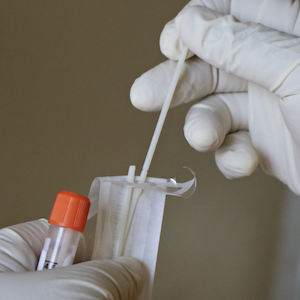STAT3 eye-opener in COVID-19

HTML: 40
All claims expressed in this article are solely those of the authors and do not necessarily represent those of their affiliated organizations, or those of the publisher, the editors and the reviewers. Any product that may be evaluated in this article or claim that may be made by its manufacturer is not guaranteed or endorsed by the publisher.
Authors
Among the elevated inflammatory mediators, blood Interleukin-6 (IL-6) level is highly correlated with COVID-19 mortality and predicts the need for mechanical ventilation. IL-6 is the major activator of signal transducers and activators of transcription-3 (STAT3) during inflammatory responses. The primary objective of the study is to explore STAT3 activation in different subsets of circulating cells derived from 25 COVID-19 patients (patients) admitted to an Internal Medicine department compared to 25 healthy donors (HD). Higher percentages of classical and intermediate monocytes were observed in patients, compared to HD (respectively P<0.01 and P<0.001). The active form of STAT3, phosphorylated STAT3 (pSTAT3) was significantly higher in patients, compared to HD, both in non-classical and in intermediate monocytes (P<0.001). Low-density neutrophils (LDN) count was significantly higher in patients compared to HD (P<0.001). The pSTAT3 was significantly higher in LDN derived from patients (P<0.05). High pSTAT3 was significantly directly related to d-dimer and inversely related to vitamin D levels (P<0.01). This study gives information about STAT3 activation and the possible role of Vitamin D as a tool against COVID-19.
Downloads
PlumX Metrics
PlumX Metrics provide insights into the ways people interact with individual pieces of research output (articles, conference proceedings, book chapters, and many more) in the online environment. Examples include, when research is mentioned in the news or is tweeted about. Collectively known as PlumX Metrics, these metrics are divided into five categories to help make sense of the huge amounts of data involved and to enable analysis by comparing like with like.
How to Cite

This work is licensed under a Creative Commons Attribution-NonCommercial 4.0 International License.
PAGEPress has chosen to apply the Creative Commons Attribution NonCommercial 4.0 International License (CC BY-NC 4.0) to all manuscripts to be published.

 https://doi.org/10.4081/itjm.2023.1650
https://doi.org/10.4081/itjm.2023.1650



